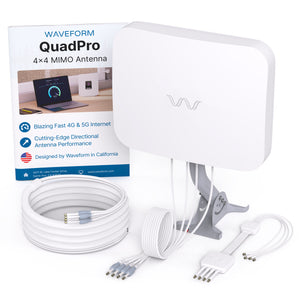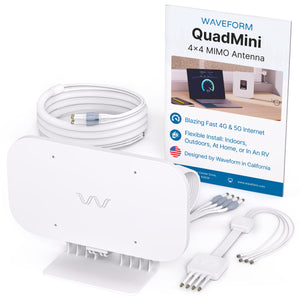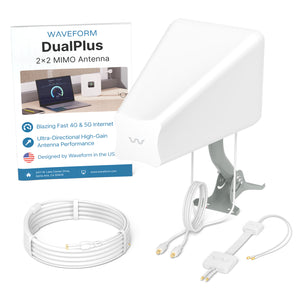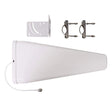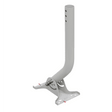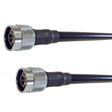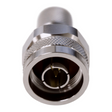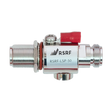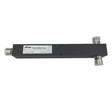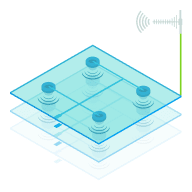North Dakota's economy relies on energy production, large-scale agriculture, and heavy manufacturing spread across thousands of square miles. Wellheads outside Williston, grain terminals in Hillsboro, and fabrication plants in Fargo all share the same challenge: keeping people, equipment, and data connected through steel walls, expansive outdoor yards, and punishing winters. Traditional WiFi lacks the range and interference protection, while public LTE contracts become costly and congested. A private 5G network solves those pain points and gives your operation full control of coverage, security, and cost.
Why Industries Across North Dakota Are Moving Beyond WiFi
Oil and Gas: Drilling pads and midstream facilities along the Bakken need reliable telemetry, push-to-talk voice, and remote video inspection. Fiber is rarely available, and WiFi radios struggle with distance and dust. A private CBRS LTE or 5G cell can blanket a multi-acre pad with a single radio, keeping SCADA data and on-site crews online even during white-out conditions.
Agriculture and AgTech: From autonomous tractors to moisture sensors inside 200-foot grain elevators, modern farms generate data far from any ethernet drop. Private 5G supports mobility over hundreds of acres and integrates directly into the farm's existing SCADA or MES platforms without per-gigabyte carrier fees.
Manufacturing and Warehousing: North Dakota's growing logistics hubs around Grand Forks and Fargo use high-bay racking, metal rafter roofs, and constantly moving forklifts. WiFi access points mounted 40 feet up regularly drop packets. Private 5G operates at higher power, uses licensed CBRS spectrum, and hands off seamlessly as devices move, maintaining the low latency required for barcode scanners and autonomous guided vehicles.
Higher Education and Healthcare: Campuses such as North Dakota State University and regional critical-access hospitals need HIPAA-grade security and wide outdoor coverage for tele-medicine carts, body-worn cameras, and IoT sensors. Private networks isolate traffic on-premises and integrate with existing firewalls, making compliance audits straightforward.
North Dakota weather is also a factor. Radios must survive −30 °F wind chills, ice loading, and summer thunderstorms. The industrial-grade small cells we deploy are certified for extreme temperatures and sealed against blowing dust, so your network stays online year-round.
What Makes A Private 5G Network Different
A private 5G (or LTE) network uses Citizens Broadband Radio Service (CBRS) spectrum that the FCC set aside for enterprise use. You own the SIM cards, the traffic never leaves your firewall, and you are not billed per device. Compared with:
-
Commercial 5G from AT&T, Verizon, or T-Mobile
- Coverage: Macro towers may be miles away, leaving dead zones inside metal buildings. A private cell sits on your property, so you design signal strength exactly where you need it.
- Cost: Carriers charge per line and per gigabyte. In a private network those fees disappear, so adding another tablet or camera is effectively free.
- Latency and security: Traffic on a carrier network travels to the nearest core in another state then back. A private core sits on site or in your data center, reducing latency and letting you enforce local VLANs and QoS.
-
WiFi 6/7
- Spectrum: Unlicensed WiFi channels are crowded by neighboring networks and interference from machinery. CBRS is lightly used and coordinated nationally, so signal remains clean.
- Range and power: WiFi access points transmit at 100 mW under FCC rules, while CBRS small cells transmit up to 47 dBm EIRP, roughly 50 times more power. A single 5G radio can cover yards where you would otherwise install dozens of WiFi APs.
- Mobility: Cellular protocols were designed for vehicles moving at highway speeds. WiFi hand-offs often hiccup at just walking speed, risking dropped VOIP or AGV guidance.
For a deeper technical dive, our Private Networks Guide explains spectrum, cores, and device options in plain language.
Our Proven Design And Deployment Workflow
-
Rapid Site Snapshot
You send us a floor plan, a KMZ, or even a hand-drawn sketch and describe the devices you plan to connect. Within three business days we return a coverage heatmap, radio count, and budgetary range so you can decide whether private 5G is the right tool.
-
Detailed RF Model and Proposal
When you are ready to proceed we collect precise drawings, material specs, and device counts. Using advanced propagation software we create a 3D RF model, specify the optimal mix of Celona, Baicells, Airspan, or other radios, and produce a fixed-price proposal that includes bill of materials, install timeline, and SLA.
-
Turnkey Deployment
Our crew arrives with pre-configured small cells, PoE switches, fiber jumpers, and labeled SIM cards. Most indoor systems are live inside a week, and outdoor yards up to a mile across complete in two or three. We run acceptance tests so day-one coverage matches the model.
-
Ongoing Support
We monitor the network core 24 × 7, push firmware updates, and handle SIM provisioning. If you need new devices, our online catalog stocks Peplink routers, Zebra scanners, Digi gateways, and more, already certified for CBRS.
Experience You Can Verify
While our focus today is private 5G, we have delivered enterprise wireless solutions nationwide. For example, we recently completed a wireless deployment for Metropolitan Market, an upscale grocery retailer highlighted in our case study. The project demonstrates our ability to design around challenging building materials and high customer density, skills directly applicable to North Dakota's industrial and retail sites.
Transparent Budgeting
Indoor private networks typically run between $1.00 and $2.50 per square foot turnkey, including radios, edge compute, installation, and commissioning. Outdoor projects are even more cost-effective. In open terrain a single CBRS macro small cell can cover a 1.5-mile radius for roughly $100,000 including the EPC and spectrum coordination. That works out to pennies per square foot for mines, wind farms, or rail yards compared with the six-figure access-point counts WiFi would require.
Because we are vendor-agnostic, every quote includes line-item pricing. You always know exactly what you are paying for spectrum access, core software, radios, and labor, and you can swap components if your requirements change.
Ready To Talk?
Waveform is a connectivity integrator that delivers fully managed Private 5G network solutions across North Dakota and beyond. Call us at (800) 637-4049 or get a custom private 5g design and quote today. We look forward to showing you how simple and cost-effective enterprise-grade wireless can be.























